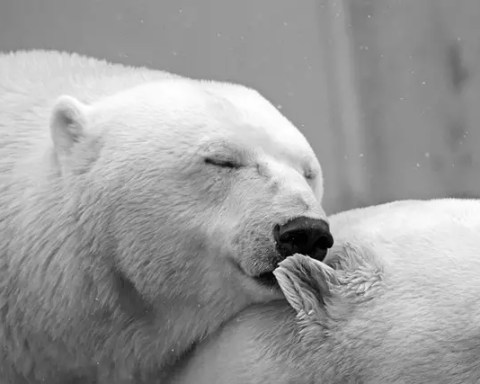The polar bear and brown seems to have one evolutionary ancestor. Scientists estimate that both species set apart during the latest glaciations, Pleistocene epoch which lasted from 2.5 million years to 11,700 years ago. Biologists believe that the early polar bears were mammoth size; they were exceptionally stronger and bigger than the modern day ice bears. While the present-day polar bears are the greatest than any bear species it has significantly shrunk in size and height over the centuries. Furthermore, many morphological changes continued to occur in the last 20,000 – 40,000 years ago. The modern-day polar bears have come up with numerous innovative traits which the early specimens lack. The newly derived traits of ice bears are thought to be an example of quantum speciation.
Where Do Polar Bears Come From?
Thanks to the molecular genetics which assist scientists in understanding the polar bear evolution. Previously they relied only on fossil samples. The fossilized evidence of teeth and polar bear bones signifies their shared origins with brown bears. Biologists found very few fossils many of which lack the phylogenetic information. Kocher and Shields were the first scientists to assess the mtDNA patterns showed that the polar bears were closely related to brown bears.
Yet another scientist Cronin in 1991 discovered that brown bears mtDNA appears to be paraphyletic in relation to polar bears. Studies suggest that mtDNA of brown bears is likely to be related to the mtDNA of polar bears instead of mtDNA of other brown bears. Scientists compare the brown bears mtDNA of southeastern Alaska and found it nearly closer to the mtDNA of polar bears. They found only 1% divergence in mtDNA of brown bears and that of polar bears. However scientists do believe that in order to study the overall genetic differentiation the mtDNA sequence is not really required. But the mtDNA sequences do nevertheless provide the concrete explanation about the evolution and origin of polar bears.
Brown Bear to Polar Bear Evolution
In 1996 scientists concluded that the brown bears of Alexander Archipelago were derived from ancestors which gave birth to modern day polar bears. The ancestors probably had lived in the southeastern Alaska during Pleistocene period and separated from brown bears. Since Alexander Archipelago brown bears appeared to show different mtDNA lineages in relation to other brown bears both separated as early as 550,000–700,000 years ago. The separation in mtDNA sequences also explains that the polar bears parted from brown bears ancestors some 200,000–250,000 years ago.
The study of mtDNA nucleotide sequence shows that the brown bear ancestors separated from black bear ancestors around 1.2 – 1.5 million years ago. According to the fossil records black bears split from brown bears lineage approximately 1.5 – 2.5 million years ago.
The Irish brown bear is an extinct subspecies and its mtDNA proves her closer relation with polar bears. The two species might have mated on land during summer when the ice melted and brown bears began to move northward. The overall brown bears population seems to show 2% genetic material that belongs to polar bears however the ABC island population contains as much as 5 – 10% polar bear genes. It explains only lately the two species have started mating separately.
Read More: Polar Bear Genetics
It is also evident from the fact that even today modern polar bears breed with modern brown bears to give birth to pizzly or grolar bear. Subsequently brown bears and polar bears do not appear to be genetically dissimilar. That is not to say that brown bears can survive in the arctic or polar bears can breed in the forests of southeastern Alaska. This can never happen for both species neither shares their ecological niche including morphology, social behavior, habitats, nor do they possess same feeding habits. As it turns out scientists recognize brown bears and polar bears as separate species.
Scientists suggest that the DNA sequence might not be able to explain relationships among species. The mtDNA sequence appears to diverge more as compared to the functional genes. All DNA evidences prove that the modern polar bears are only derived
Scientists agree that modern polar bears have lately been derived from ancestors. DNA evidence from the fossil records also shows that the polar bears are in the process of evolution. It is only the arctic limitation that is putting check on the rapid evolution of polar bears.



